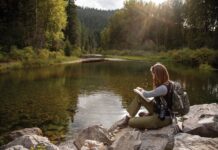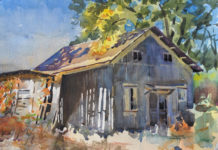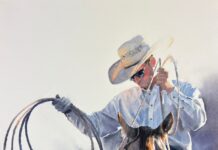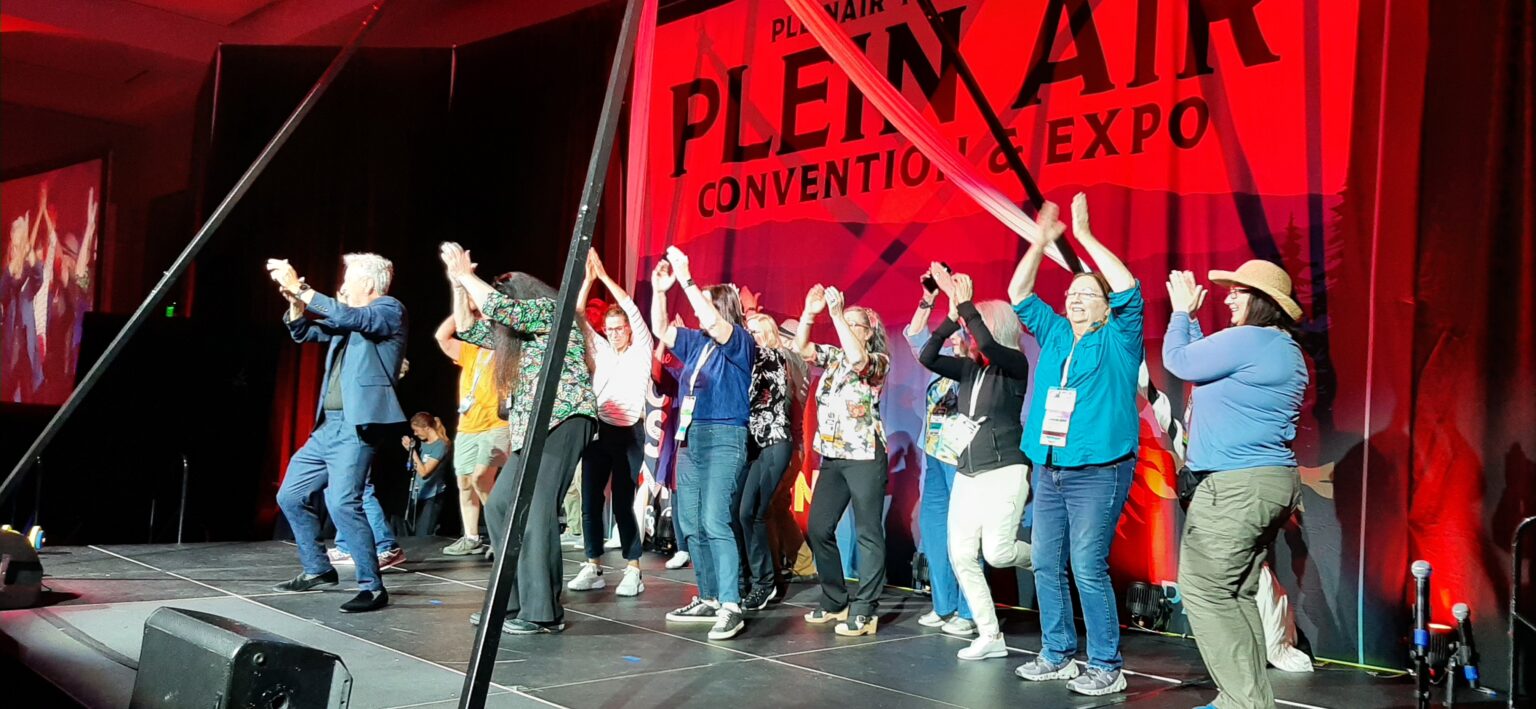
If, like me, you’re still settling back at home after a fun-filled week in the Smokies for the 11th Annual Plein Air Convention & Expo (PACE), I thought you might enjoy a few highlights of our time together. If you missed the event this year, we hope these photos and stories inspire you to join us next May in … Lake Tahoe!
Starting Off on the Right Foot
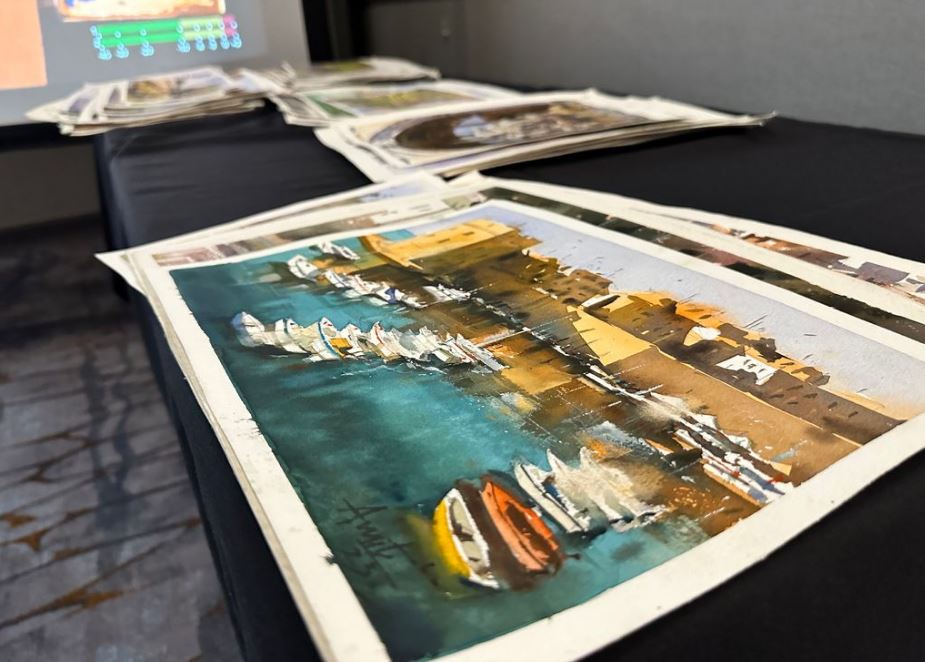
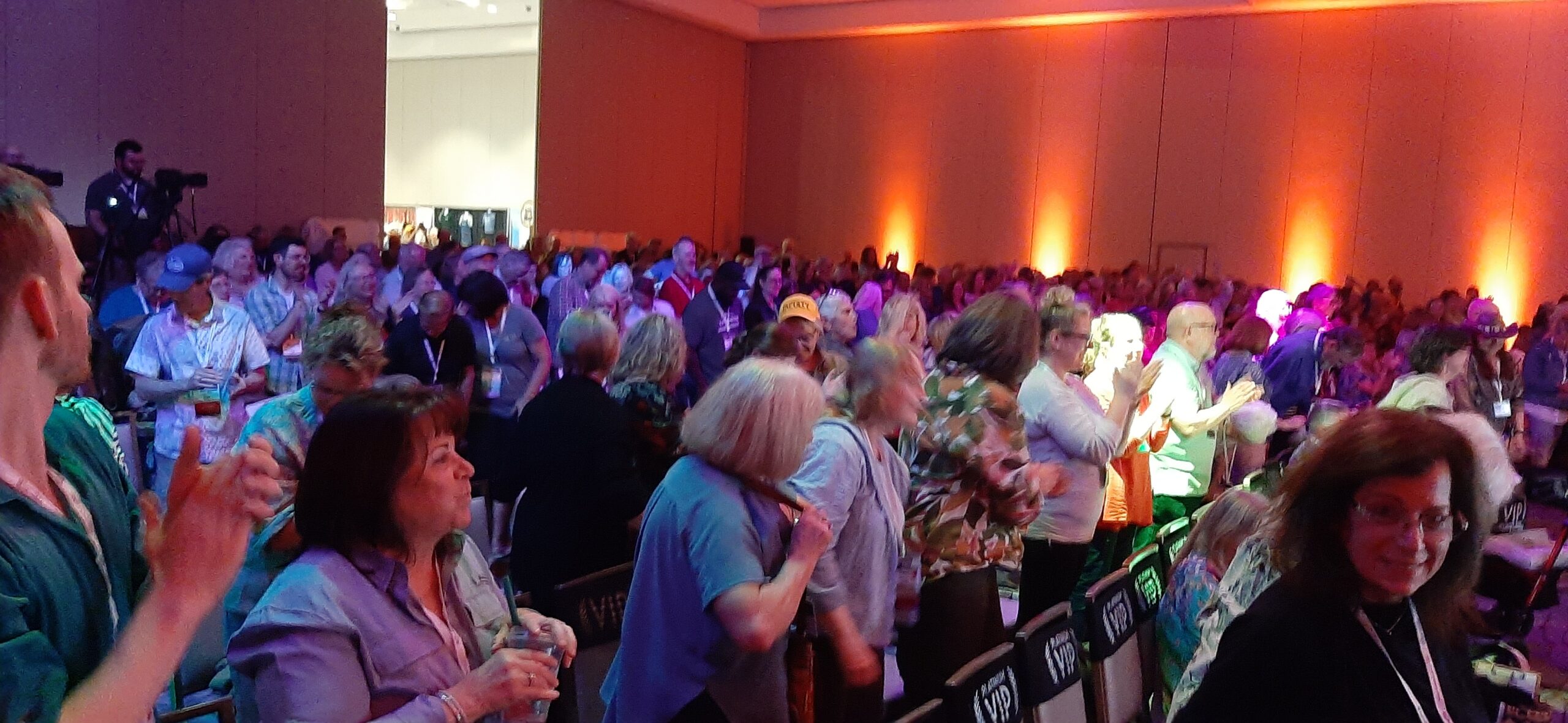
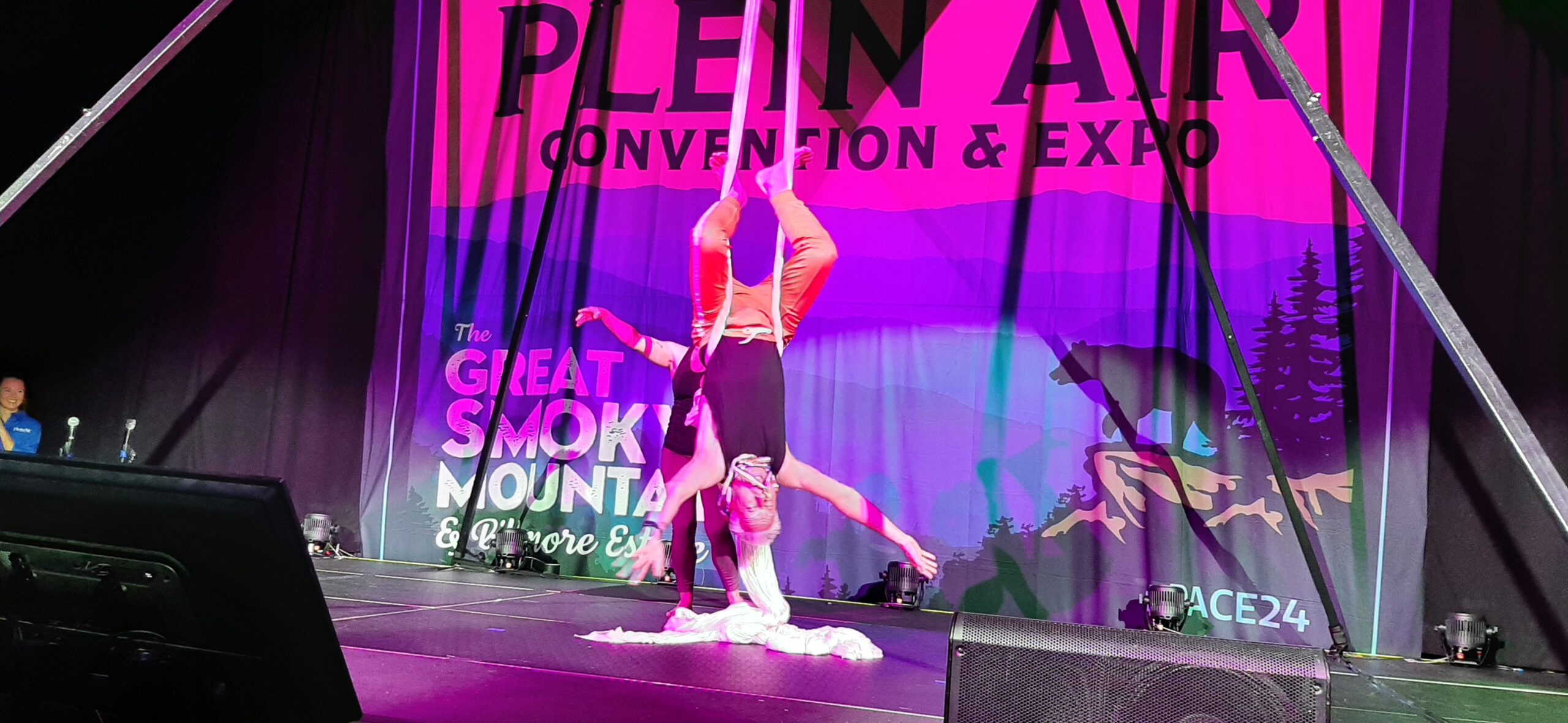
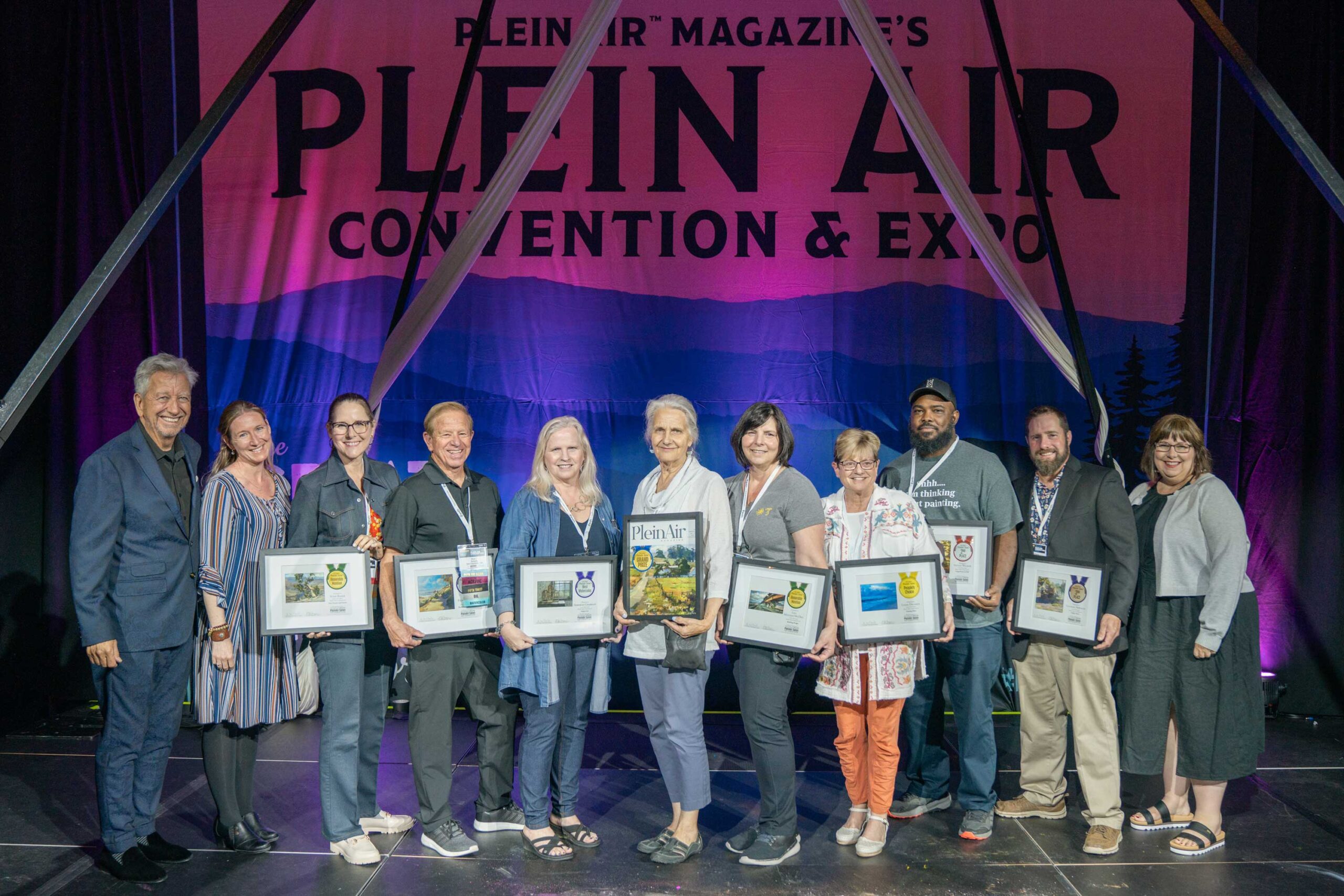
From Online to In-Person at the Plein Air Convention
First-timer Gretchen Wurth said she knew she had to come to the Plein Air Convention when it was announced that the location is practically in her backyard; her husband even insisted on it after seeing her enthusiasm for Plein Air Live, Realism Live, and Watercolor Live. “I’m just so excited,” she said. “I’m overwhelmed to be here because it’s so cool to meet and talk with everybody that you see online, including Eric Rhoads.”
She added that even before PACE officially began, it felt welcoming and friendly, even though she was intimidated at first because of all the “big players” here, including some amazing artists from around the country and even the world.
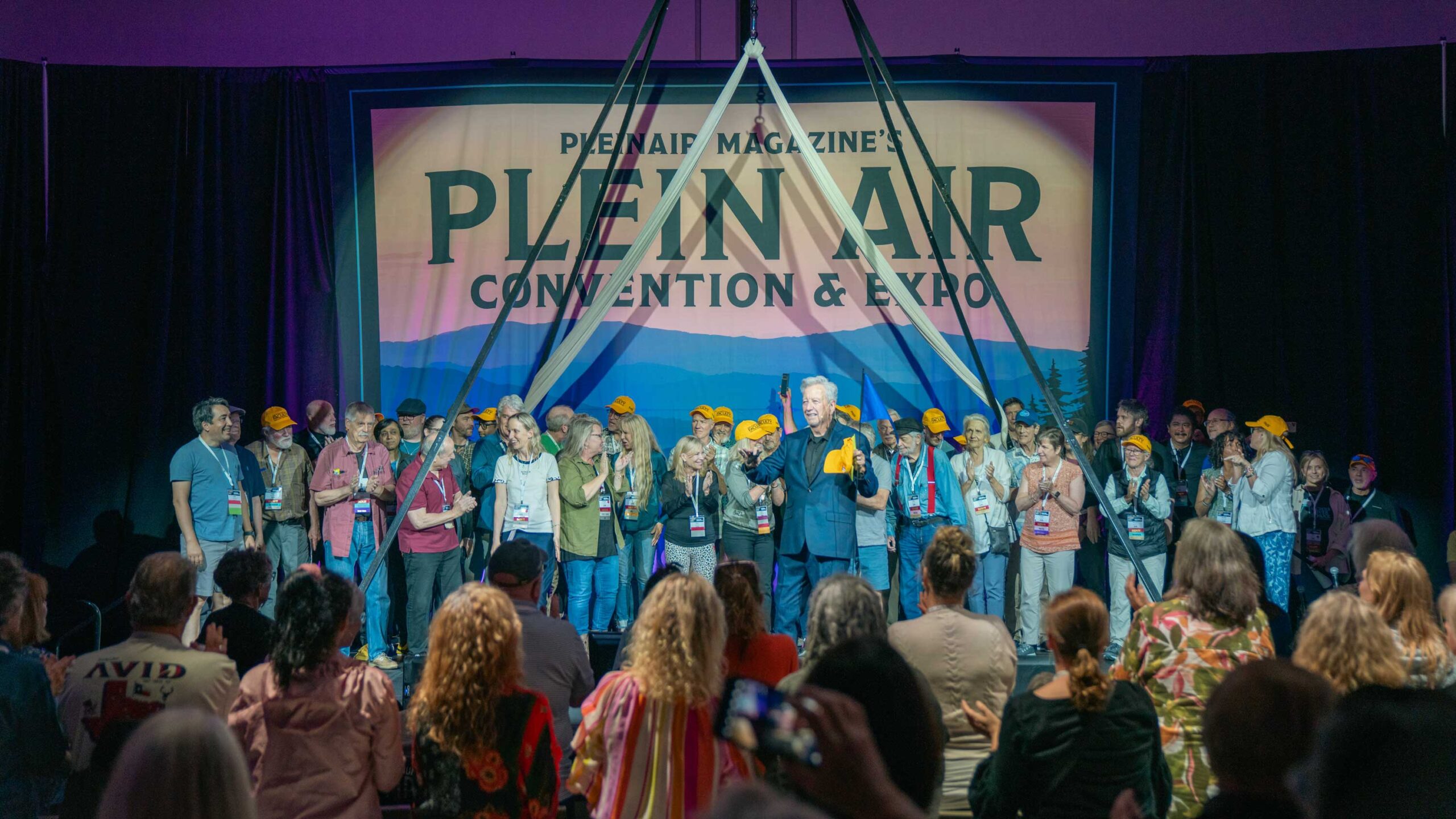
Paint Outs
Picture this: You look in one direction and spot a cool, burbling river running alongside a forested valley trail; or turn in the other direction and enjoy a view of a golden, open field at the base of tree-covered mountains leading up to a perfect white-cloud sky. This was the choice our attendees had at Day 2 of the Plein Air Convention last week.
Joining the hundreds of us there was also a fly fisherman (perfect for adding a figure to the landscape), roaming chickens, and even majestic elk at the Oconaluftee Visitor Center of the Great Smoky Mountains in Cherokee, North Carolina.
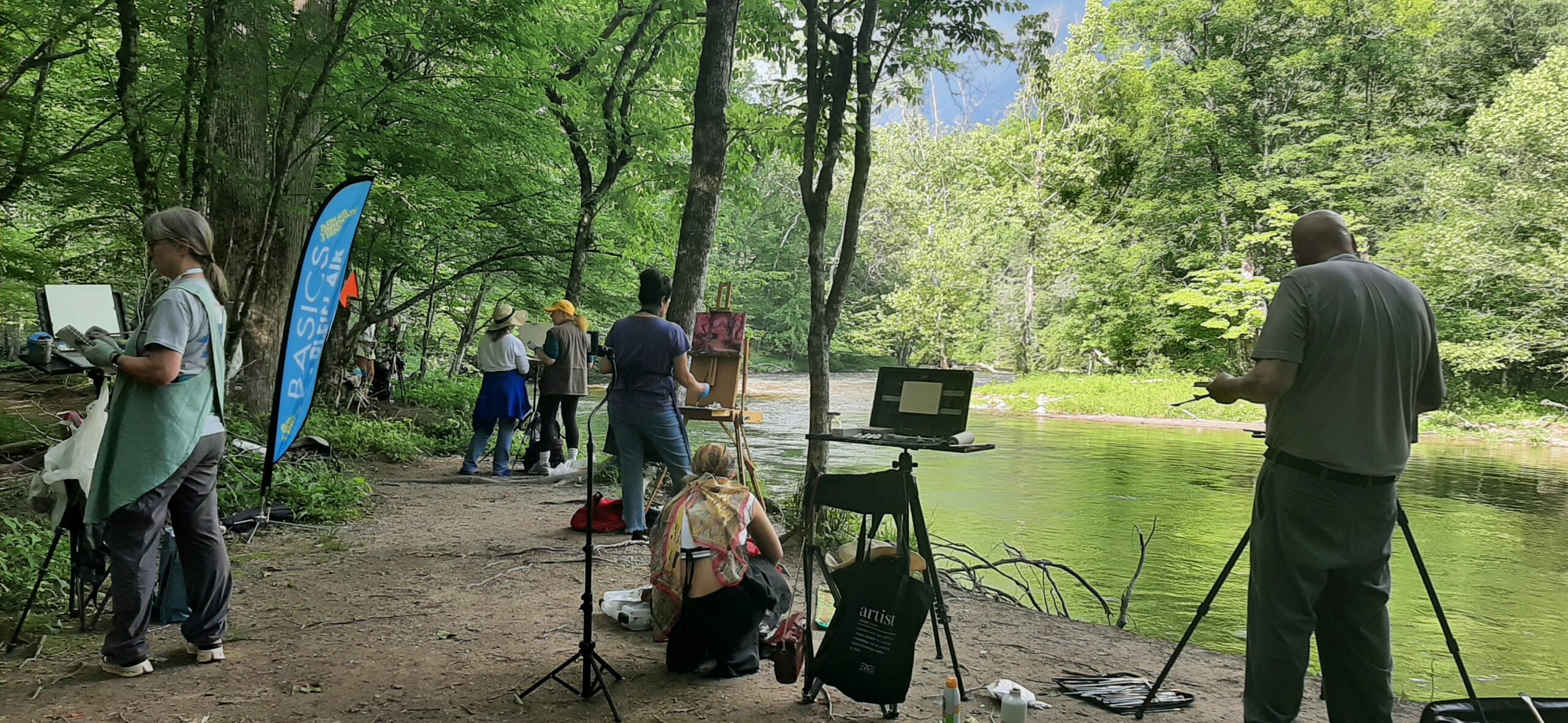
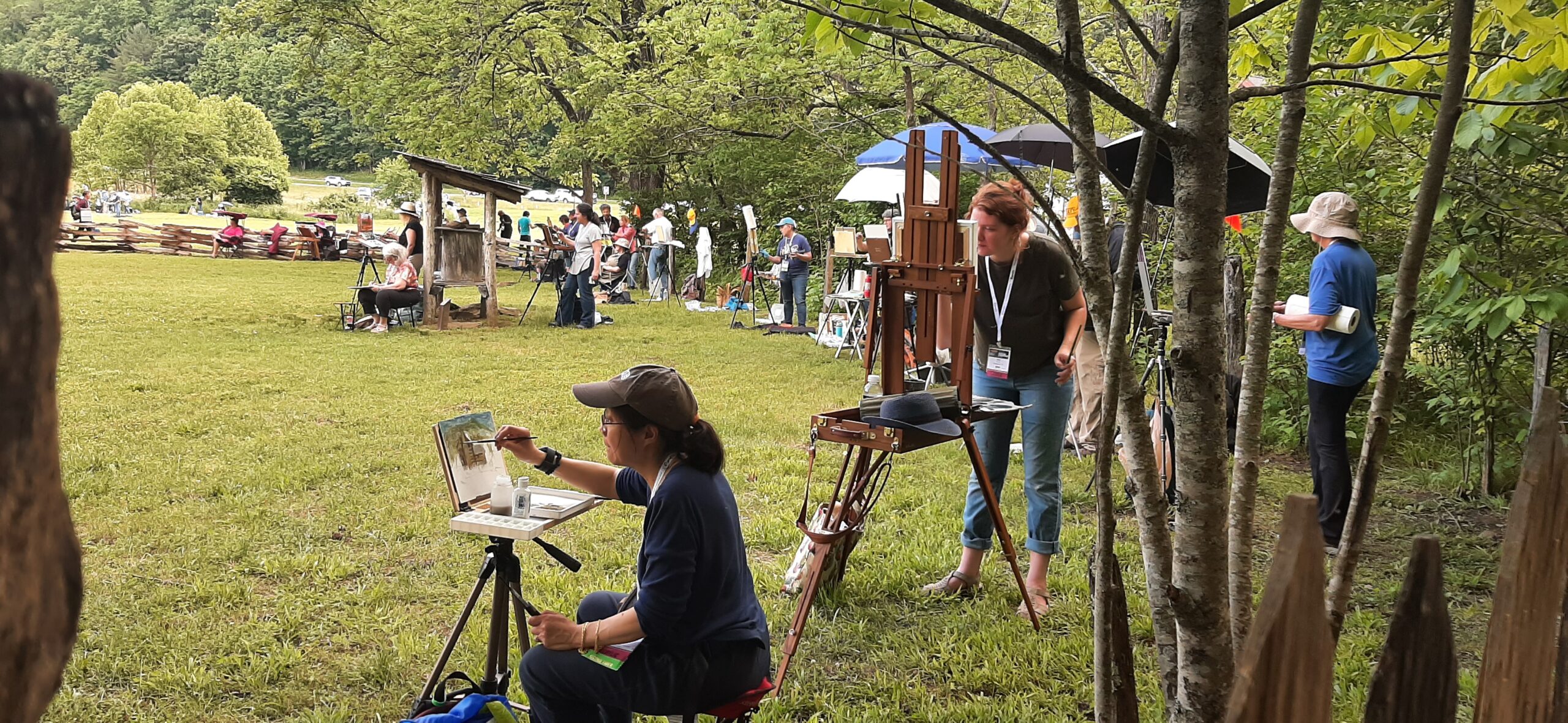
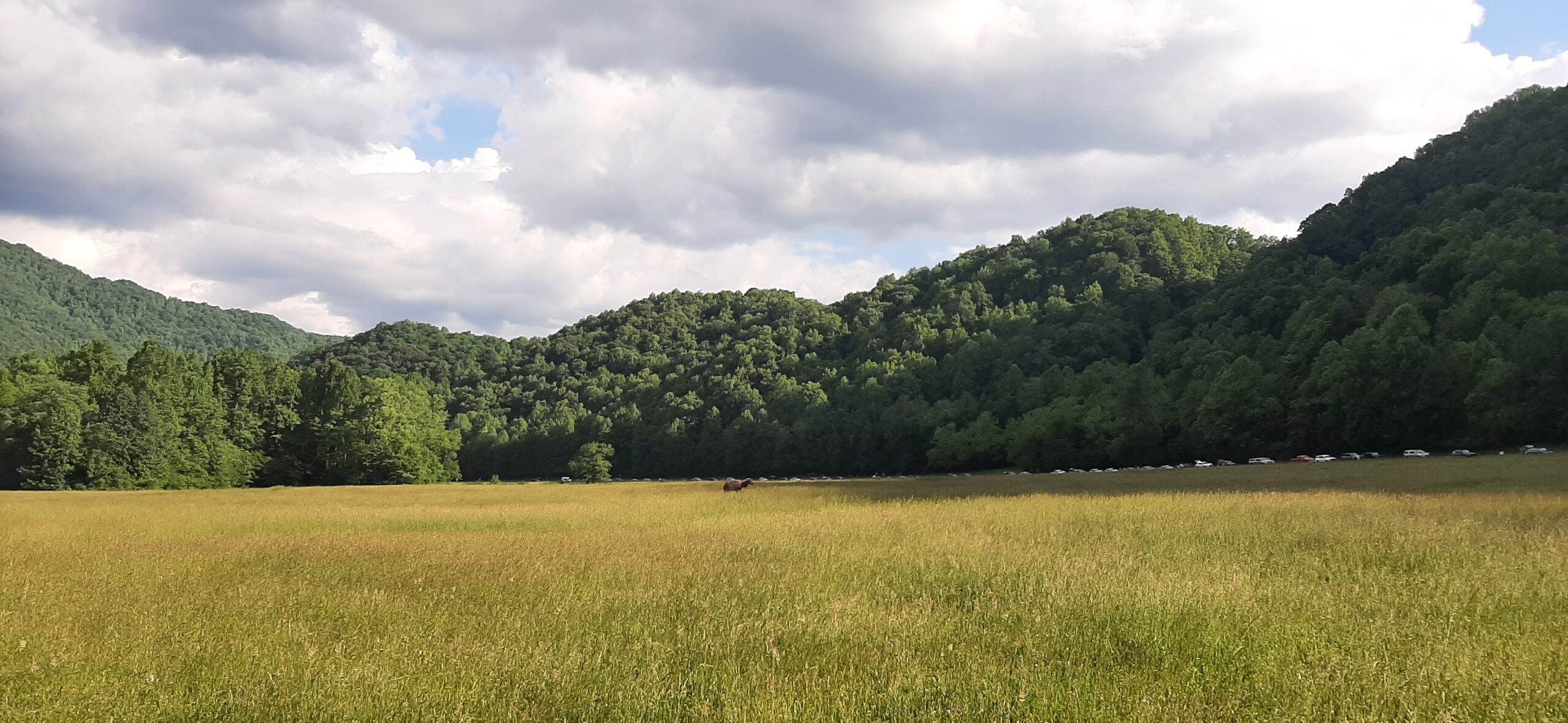
After another full morning and afternoon of painting demonstrations across five stages on Day 3, we headed outdoors for another opportunity to put into practice everything – or at least something! – we learned. Charter buses took many artists to the charming Darnell Farms, and others headed to the Oconaluftee Indian Village & Cherokee Botanical Gardens to paint.
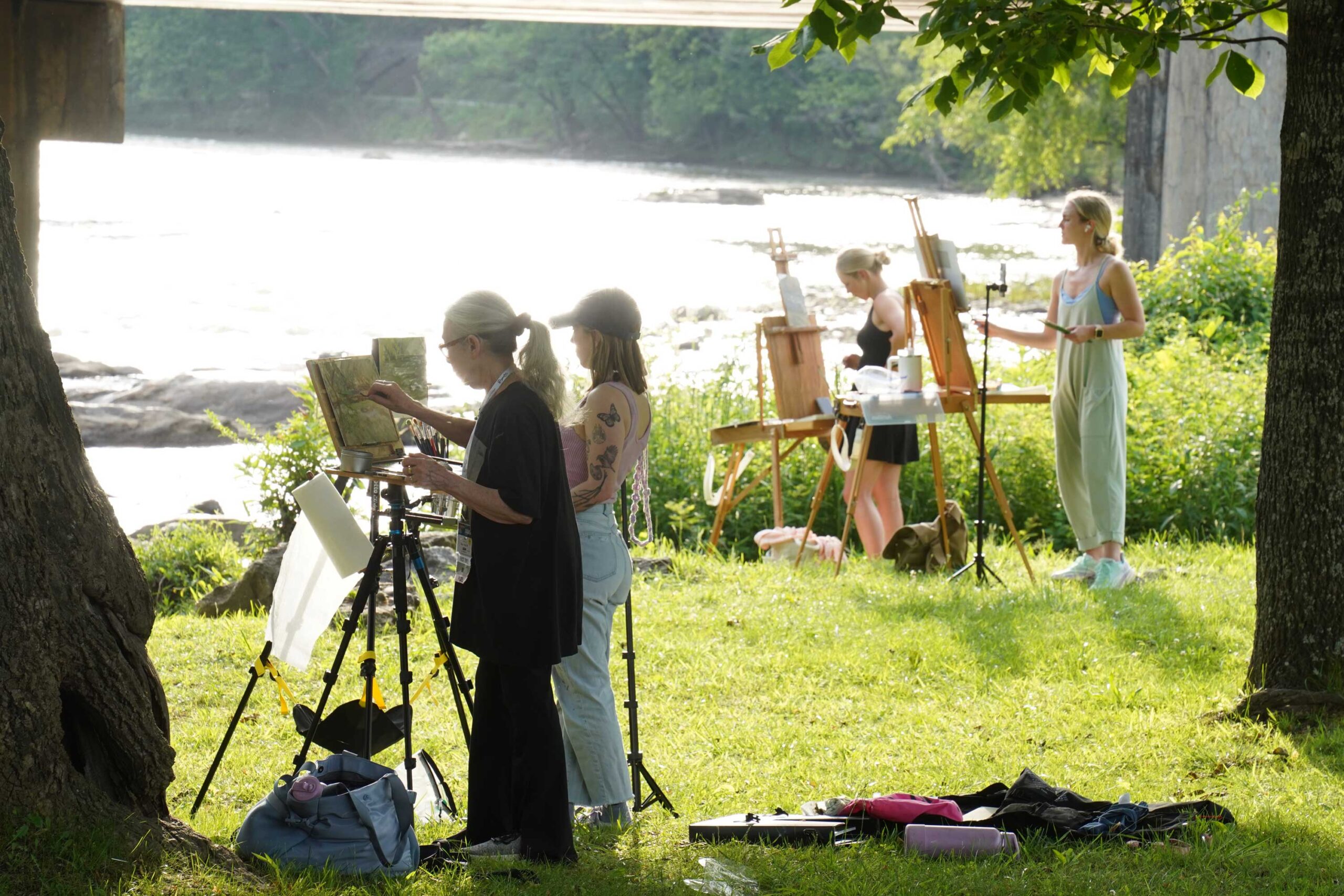
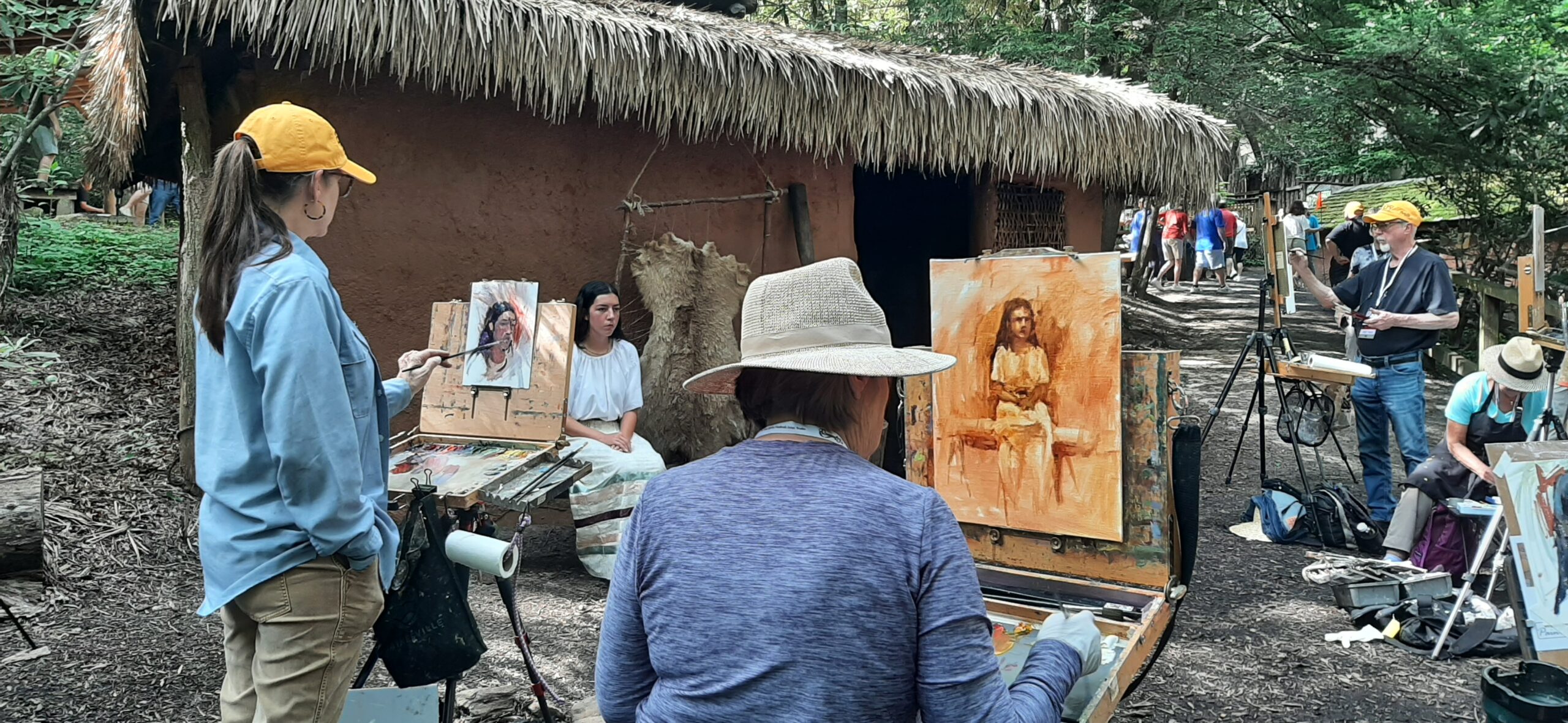
On Day 4, we returned to Darnell Farms in Bryson City, North Carolina. Despite a healthy downpour, attendees found a variety of scenes to inspire them.
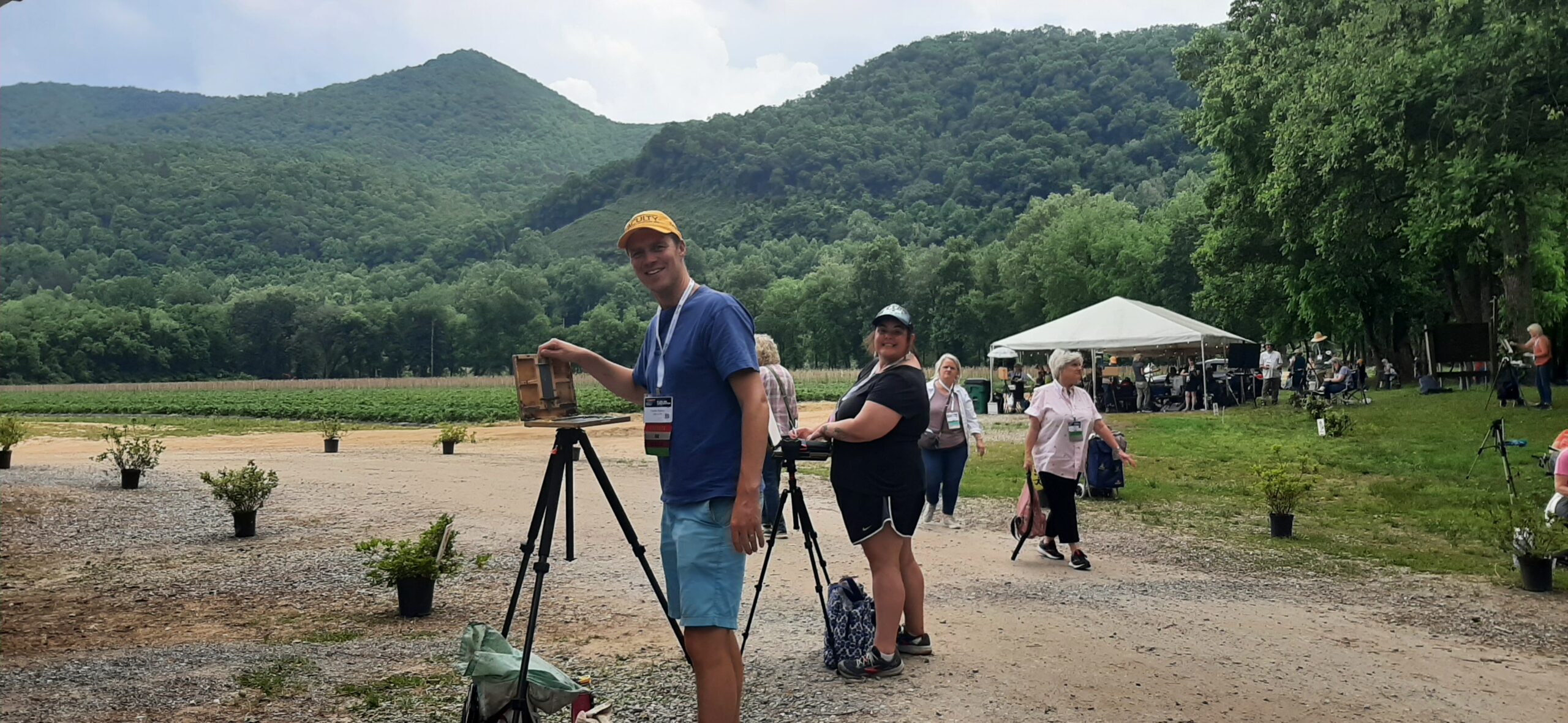
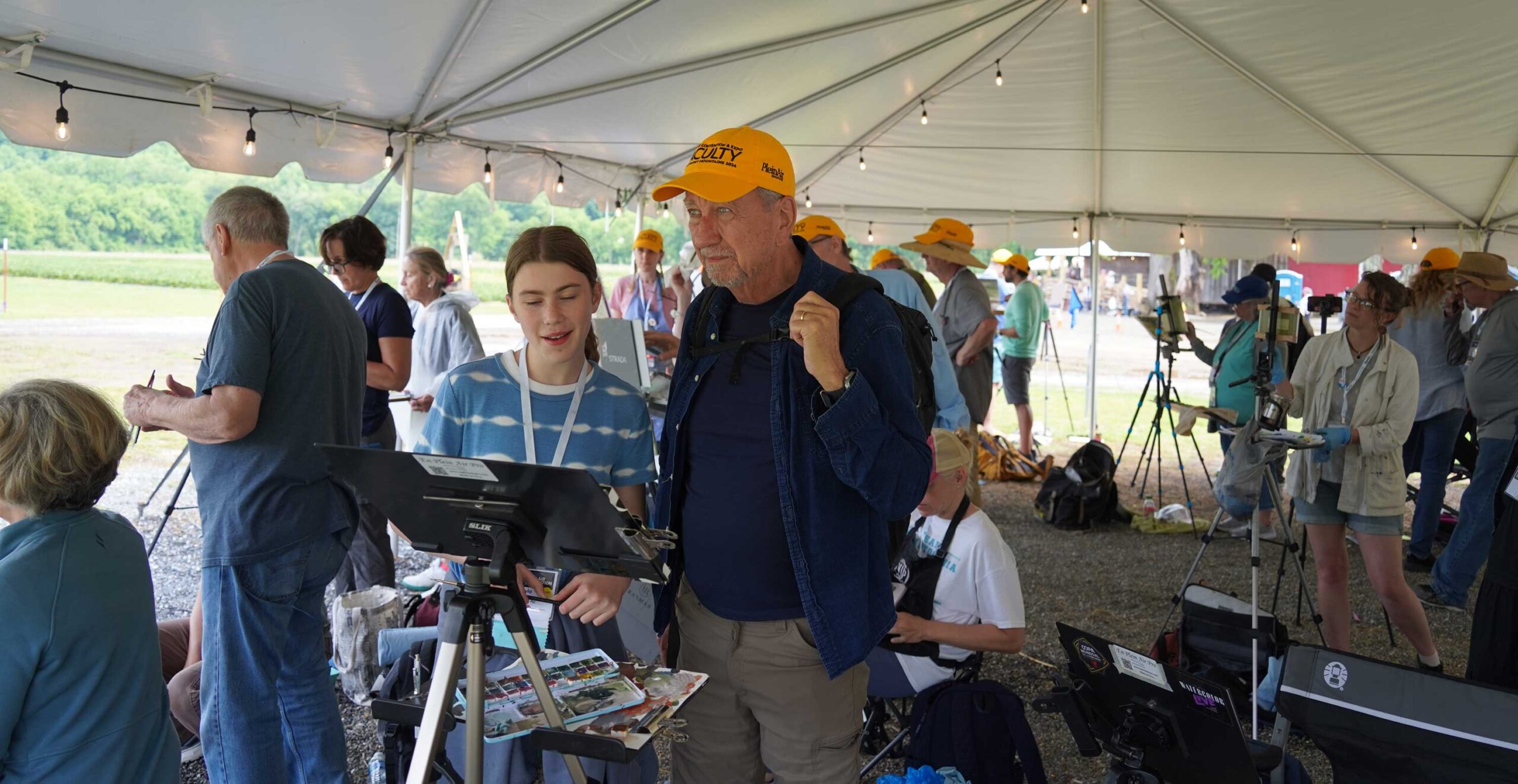
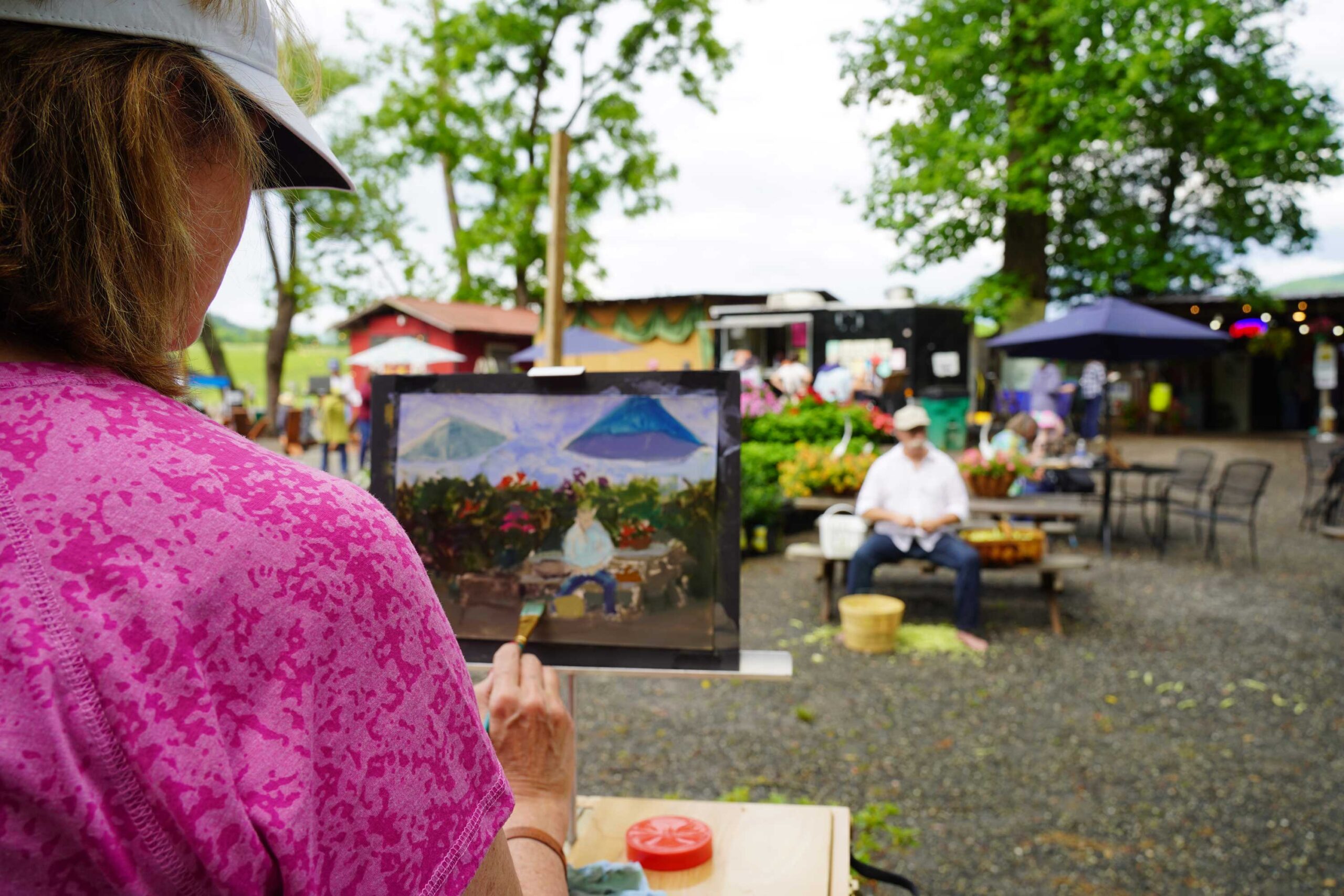
Watercolor Demos
Here are a few highlights from the watercolor stage (all watermedia, all the time!):
Jerry Smith demonstrated a bold approach to using acrylics on paper to create expressive watermedia landscapes. He discussed various aspects of the process including idea development, sketching, composition, painting procedure, and working in a series.
Stephen Quiller demonstrated with transparent watercolor, providing information that can be used for any medium, including acrylic and oil. He showed us many different ways to create neutrals and semi-neutrals, then selected the neutral that best fit the harmonious color family choices for his demo composition.
We learn the art of keeping focal areas intricate, drawing the viewer’s gaze to the heart of your composition with Harsh Agrawal. But that’s not all — we discovered how to strategically loosen up areas to invite curiosity without stealing the spotlight. This session revolutionized the approach to “complex” subjects by creating a composition that leaves a lasting impression.
Richard Russell Sneary taught us how to simplify shapes, lines, and color. He says to balance and change the emphasis of lights and darks to create movement and interest in your composition and direct the eye through it, and bring harmony to your paintings. It’s all about learning!
Iain Stewart’s reliance on the sketchbook as his primary means of plein air painting allows him to lighten his load and take a bit of stress out of the “need” to create something worthy of his day’s outing. Iain taught the value of using a sketchbook to capture memories of places.
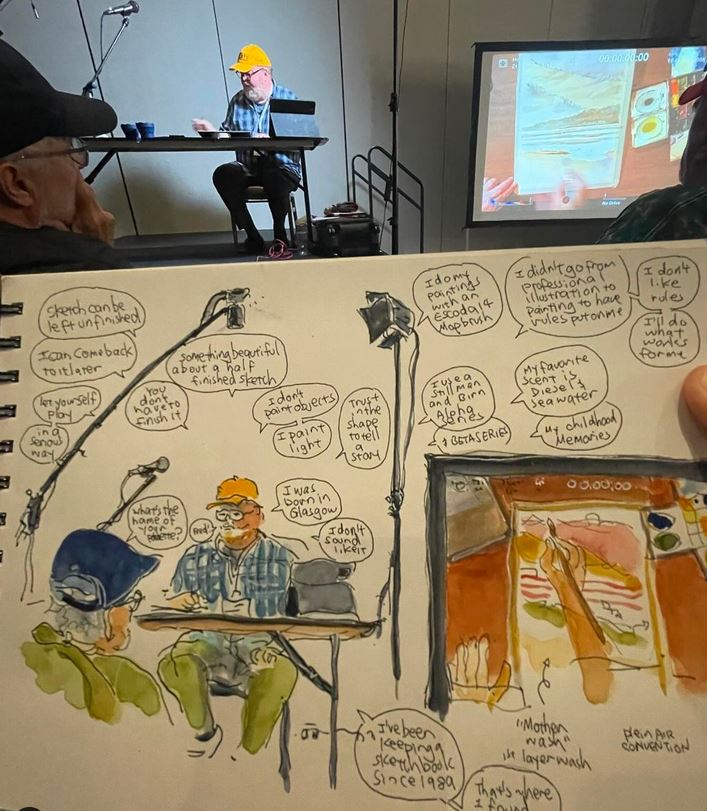
A nocturne is a challenging subject to paint, especially in watercolor. However, Richie Vios has developed a system for nocturnal painting that makes it easier to paint at night than in the day. He revealed three essential tools: 1) how to compose necessary shapes, just enough to tell a story; 2) watercolor consistency for more accurate timing (“Watercolor Clock”); and 3) the four pillars of dynamic paintings.
Egg tempera has been around since Ancient Egypt. It is flexible, immediate, and simple to use, yet it is seldom used in plein air or studio work. In his session, Stewart White examined the pros and cons and all the wonderful qualities of this ancient medium in a contemporary new light.
We joined Georgia Mansur for a fascinating session on how to use grounds and pastes to paint a textured watercolor — something that can be applied to both watercolor and acrylic paints.
Establishing shadow shapes first is key to Barbara Tapp’s bold plein air watercolors. She demonstrated drawing the design, the shadow shapes, and the values in a sketchbook, then proceeded to paint a watercolor working from dark to light, resulting in a painting with strong values. She also shared some of her personal watercolor tips and discoveries along the way.
In his demonstration during the main event, Amit Kapoor explained how to capture light and shadow and portray a complicated subject in an easy way. He also taught us how to paint reflections using a reference image from Saint-Tropez, France.
Join us next year for the 12th Annual Plein Air Convention & Expo – you don’t want to miss it!

